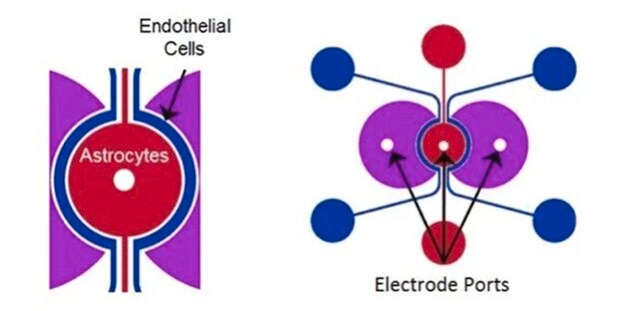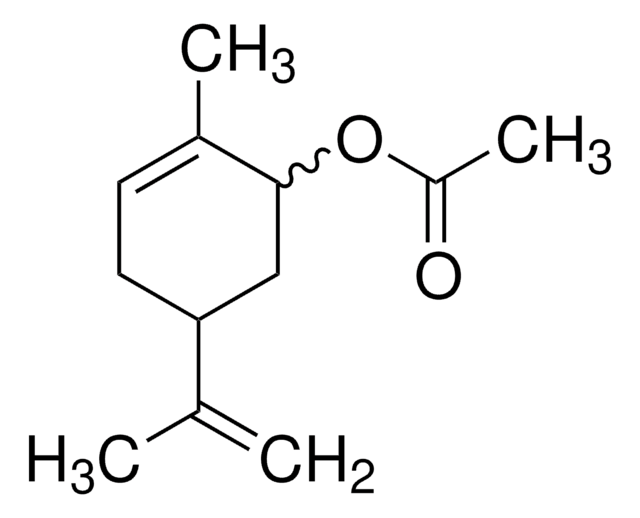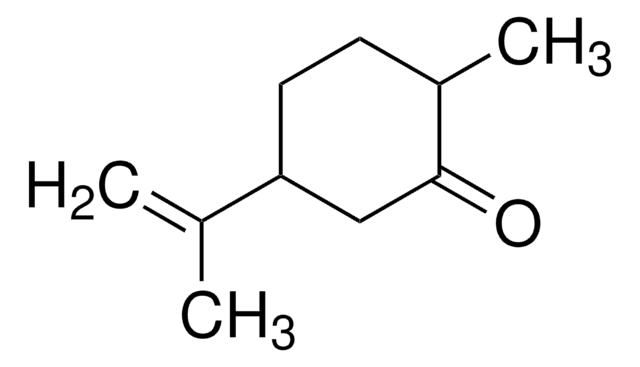Kluczowe dokumenty
W224707
L-Carveol, mixture of cis and trans
≥95%, FG
Synonim(y):
(−)-Carveol, mixture of isomers, p-Mentha-6,8-dien-2-ol
About This Item
Fragrance grade
Halal
Kosher
Polecane produkty
pochodzenie biologiczne
synthetic
Poziom jakości
klasa czystości
FG
Fragrance grade
Halal
Kosher
agency
follows IFRA guidelines
zgodność regionalna
EU Regulation 1223/2009
EU Regulation 1334/2008 & 178/2002
FDA 21 CFR 117
FDA 21 CFR 172.515
Próba
≥95%
aktywność optyczna
[α]22/D −115°, c = 1 in chloroform
skład
contains IFRA restricted Carvone
współczynnik refrakcji
n20/D 1.496 (lit.)
bp
226-227 °C/751 mmHg (lit.)
gęstość
0.958 g/mL at 25 °C (lit.)
Zastosowanie
flavors and fragrances
Dokumentacja
see Safety & Documentation for available documents
alergen pokarmowy
no known allergens
alergen zapachowy
carvone
Organoleptyczne
minty; herbaceous
ciąg SMILES
CC(=C)[C@@H]1CC=C(C)C(O)C1
InChI
1S/C10H16O/c1-7(2)9-5-4-8(3)10(11)6-9/h4,9-11H,1,5-6H2,2-3H3/t9-,10?/m1/s1
Klucz InChI
BAVONGHXFVOKBV-YHMJZVADSA-N
Szukasz podobnych produktów? Odwiedź Przewodnik dotyczący porównywania produktów
Powiązane kategorie
Opis ogólny
Hasło ostrzegawcze
Warning
Zwroty wskazujące rodzaj zagrożenia
Zwroty wskazujące środki ostrożności
Klasyfikacja zagrożeń
Eye Irrit. 2 - Skin Irrit. 2 - STOT SE 3
Organy docelowe
Respiratory system
Kod klasy składowania
10 - Combustible liquids
Klasa zagrożenia wodnego (WGK)
WGK 2
Temperatura zapłonu (°F)
208.4 °F - closed cup
Temperatura zapłonu (°C)
98 °C - closed cup
Środki ochrony indywidualnej
Eyeshields, Gloves, type ABEK (EN14387) respirator filter
Wybierz jedną z najnowszych wersji:
Masz już ten produkt?
Dokumenty związane z niedawno zakupionymi produktami zostały zamieszczone w Bibliotece dokumentów.
Klienci oglądali również te produkty
Nasz zespół naukowców ma doświadczenie we wszystkich obszarach badań, w tym w naukach przyrodniczych, materiałoznawstwie, syntezie chemicznej, chromatografii, analityce i wielu innych dziedzinach.
Skontaktuj się z zespołem ds. pomocy technicznej








